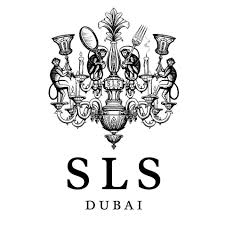Information
-
Document No.
-
Audit Title
-
Client / Site
-
Conducted on
-
Prepared by
-
Location
-
Personnel
1.QUALITY POLICY
-
Documented and communicated policy signed by senior management.
-
Green;Amber;Red
2. QUALITY MANUAL
-
Documented Quality Manual stating the company's commitment to quality
-
Management Review taking place
-
Green;Amber;Red
3.ORGANISATIONAL STRUCTURE. Responsibility & Management Authority.
-
Documented organisational structure defining job functions, responsibility and reporting relationships.<br>3.1 Organisational Chart<br>3.2 Job Descriptions
-
Green;Amber;Red
4. PRODUCT DESIGN & DEVELOPMENT.
-
4.1 HACCP Designed and implemented.<br>4.2 NPD Documented<br>4.3 Trials and product testing / analysis at NPD
-
Green;Amber;Red
5. PLANT DESIGN AND PROCESS FLOW.
-
5.1 Cleaning, waste handling, product flow and people considered to control risk of product contamination.<br>5.2 Fabrication suitable to clean, sanitise and prevent pests.
-
Green;Amber;Red
6. EQUIPMENT DESIGN & CONSTRUCTION..
-
Designed for purpose & to minimise risk of contamination.
-
Green;Amber;Red
7. PLANT HYGIENE & HOUSEKKEEPING.
-
7.1 Appropriate standards maintained.
-
Green;Amber;Red
-
7.2 Cleaning schedules and procedures in place
-
Green;Amber;Red
8. MAINTENANCE.
-
8.1 Planned maintenance in place.
-
Green;Amber;Red
-
8.2 Engineers and contractors aware of and adhering to hygiene standards.
-
Green;Amber;Red
-
8.1 Cleaning or repair work undertaken to minimise potential for cross-contamination.
-
Green;Amber;Red
9. PEST CONTROL.
-
9.1 Suitable pest control in place with detailed records of findings & corrective action.
-
Green;Amber;Red
-
9.2 Fly killers and drain traps in place and effective.
-
Green;Amber;Red
-
9.3 Incoming materials checked on arrival and stored to minimise risk of infestation.
-
Green;Amber;Red
10. WASTE DISPOSAL
-
10.1 Adequate systems of collection, collation and disposal of waste materials.
-
Green;Amber;Red
-
Recycling policies in place and followed.
-
Green;Amber;Red
11.STAFF FACILITIES.
-
11.1 Designed and operated to minimise the risk of contamination.
-
Red;Amber;Red
-
11.2 Appropriate work-wear and changing / hand-washing facilities provided.
-
Green;Amber;Red
-
11.3 Toilets do not open directly onto production areas.
-
Green;Amber;Red
-
11.4 Smoking in designated areas only
-
Green;Amber;Red
12. SITE.
-
12.1 Site located and maintained to prevent contamination.
-
Red;Amber;Green
-
12.2 Suitable site security
-
Green;Amber;Red
-
12.3 External storage appropriate and controlled.
-
Green;Amber;Red
13. TRANSPORT
-
13.1 Vehicles used for transportation of food ingredients, packaging, and products are suitable, maintained and in a hygienic condition.
-
Green;Amber;Red
-
13.2 Vehicle breakdown, temperature monitoring and hygiene procedures in place and recorded.
-
Green;Amber;Red
14. PERSONAL HYGIENE.
-
14.1 Standards documented and communicated.
-
Green;Amber;Red
15. MEDICAL SCREENING.
-
15.1 Screening in place for all food handlers including visitors, contractors and temporary staff.
-
Green;Amber;Red
16. PROTECTIVE CLOTHING.
-
16.1 Suitable protective clothing (including headwear, footwear, beard snoods, gloves - as appropriate) worn when entering food areas.
-
Green;Amber;Red
-
16.2 Protective clothing laundered on a regular basis.
-
Green;Amber;Red
-
16.3 Clear instructions for changing procedures
-
Green;Amber;Red
17.TRAINING
-
17.1 All employees trained, instructed and supervised according to their responsibilities.
-
Green;Amber;Red
-
17.2 Training of temporary personnel and contractors as appropriate.
-
Green;Amber;Red
-
17.3 All training documents and requirements reviewed.
-
Green;Amber;Red
18. TIME AND TEMPERATURE CONTROL.
-
18.1 Controlled, monitored and recorded where appropriate.
-
Green;Amber;Red
-
18.2 Corrective action taken where out of specification data identified.
-
Green;Amber;Red
19. PROCESS CONTROL.
-
19.1 Effective process controls and cross-contamination procedures in place.
-
Green;Amber;Red
-
19.2 Adequate stock rotation.
-
Green;Amber;Red
-
19.3 Re-work must not compromise food safety, quality or legality.
-
Green;Amber;Red
20. PHYSICAL, CHEMICAL AND BIOLOGICAL CONTAMINATION.
-
20.1 Appropriate HACCP procedures and facilities in place to prevent contamination.
-
Green;Amber;Red
-
20.2 Suitable chemical storage facilities.
-
Green;Amber;Red
-
20.3 Glass / plastic register and breakage procedure / records.
-
Green;Amber;Red
-
20.4 Appropriate wood handling procedures.
-
Green;Amber;Red
-
20.5 Metal Detection / X-ray Detection procedures in place.
-
Green;Amber;Red
-
20.6 Metal detection records - including calibration in place.
-
Green;Amber;Red
21. CONTROL OF NON-CONFORMING PRODUCT.
-
21.1 All out of specification product is clearly identified and quarantined or disposed of.
-
Green;Amber;Red
-
Procedures in place including rejection, acceptance, concession and corrective action.
-
Green;Amber;Red
22. IN-PROCESS AND FINISHED PRODUCT TESTING.
-
22.1 Product is not released until all release procedures have been followed and recorded.
-
Green;Amber;Red
-
22.2 Ensure that testing confirms compliance with food safety, quality and legal requirements and is undertaken according to documented sampling plans and procedures.
-
Green;Amber;Red
23. PRODUCT IDENTIFICATION AND TRACEABILITY.
-
23.1 Identify all raw materials
-
Green;Amber;Red
-
23.2 Product traceable at all stages of production, storage, despatch and distribution.
-
Green;Amber;Red
-
23.3 Effective traceability and recall procedures / records.
-
Green;Amber;Red
24. EQUIPMENT VALIDATION.
-
24.1 Operates procedures that verify the process & equipment used are capable of producing a consistently safe, quality and legal product.
-
Green;Amber;Red
-
24.2 Measuring equipment used to monitor CCP's and legal requirements are calibrated and traceable to national standards.
-
Green;Amber;Red
25. TECHNICAL SUPPORT
-
25.1 Systems in place to ensure that the operation is kept informed of all relevant legislation, food safety issues, scientific, technical developments and Codes of Practice.
-
Green;Amber;Red
26. LABORATORIES
-
26.1 Undertakes or sub-contracts analysis critical to food safety, quality and legality using appropriate.
-
Green;Amber;Red
-
26.2 Laboratory to be independently accredited by recognised body.
-
Green;Amber;Red
27 SHELF-LIFE TESTING
-
27.1 Appropriate testing accounting for product formulation, packaging, storage and intended use.
-
Green;Amber;Red
-
27.2 Shelf-life established by microbiological, chemical and organoleptic analysis as appropriate.
-
Green;Amber;Red
28. HACCP
-
The Food Safety principles should be risk - based and follow HACCP requirements.
-
Green;Amber;Red
29. SPECIFICATIONS
-
29.1 Appropriate specifications kept for raw material and packaging materials.
-
Green;Amber;Red
-
29.2 Finished product specifications are formally agreed with the customer and comply with relevant safety, quality and legal requirements.
-
Green;Amber;Red
30. PURCHASED GOODS
-
30.1 Operates procedures for approval and monitoring suppliers.
-
Green;Amber;Red
31. DOCUMENT CONTROL
-
31. Ensure that all documents, records, and data critical to the management of product safety, quality and legality are in place and adequately controlled.
-
Green;Amber;Red
32. COMPLAINT HANDLING
-
32.1 System for managing complaints with appropriate action taken and data used to implement on-going improvements.
-
Green;Amber;Red
33. INTERNAL AUDIT
-
33.1 Audit systems and procedures critical to product safety, quality and legality.
-
Green;Amber;Red
34 RECALL PROCEDURE
-
34.1 Effective product recall procedure for all products, verified by regular recall exercises.
-
Green;Amber;Red
35 CORRECTIVE ACTION
-
35.1 Procedures exist to investigate causes of non-conformance against standards, specification and procedures critical to product safety, quality and legality.
-
Green;Amber;Red
SCORING SYSTEM.
-
Green: No action required<br>Amber: Action required with evidence of compliance<br>Red: Action agreed at the closing meeting to mutually agreed timescales. * Where food safety is seriously jeopardised, action may be required immediately or supply suspended until rectified.<br><br>Evidence of action taken to be received by JD Wetherspoon QA management within 28 days from receipt of this report.
-
Number of Non-compliances
-
Green
-
Amber:
-
Red










